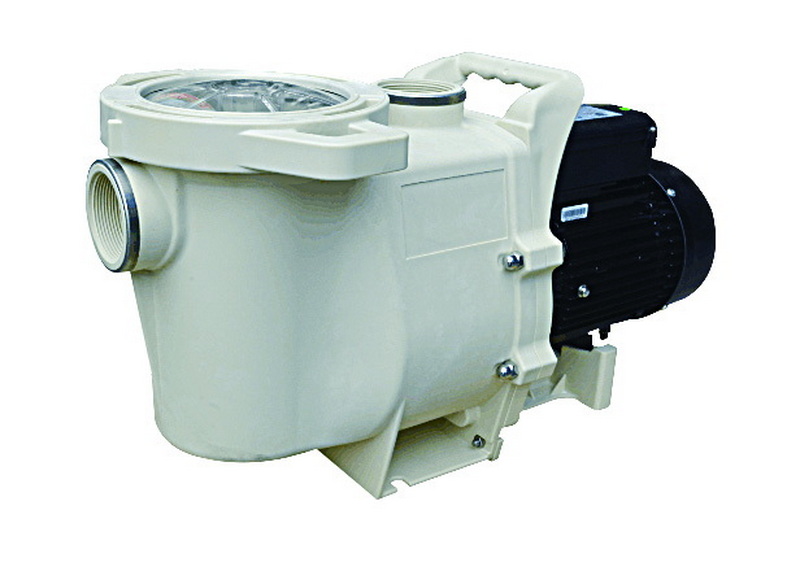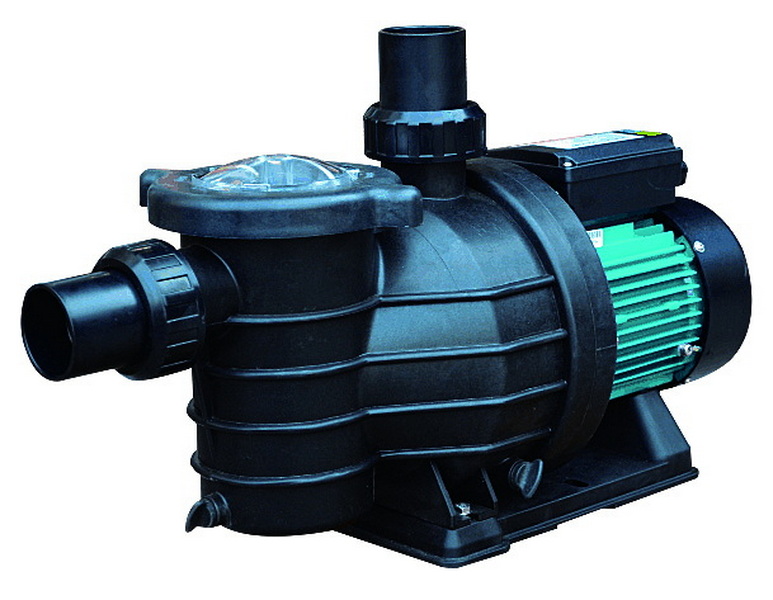Views: 222 Author: Tina Publish Time: 2025-09-28 Origin: Site








Content Menu
● Why Pool Pump Run Time Matters
>> Key Benefits of Proper Pump Operation
● General Rule of Thumb: 8–12 Hours Daily
● Factors That Influence Pump Run Time
>> Swimmer Load
● Practical Pump Run Time Guidelines
● Cost and Energy Efficiency Considerations
● Advanced Strategies for Pool Owners
● FAQs
>> 1. Should I leave my pool pump on all the time?
>> 2. Does running the pump at night save money?
>> 3. Can I split my pump run into multiple sessions?
>> 4. How do I know if I'm running the pump enough?
>> 5. Does the type of filter change runtime requirements?
A swimming pool pump is often called the “heart” of a pool system because it maintains continuous circulation of water through the filter, heater, skimmer, and sanitization devices. Without it, the pool would quickly become stagnant, cloudy, and unsafe. Pool owners—whether private homeowners or commercial operators—often ask the essential question: How long should a pool pump run every day?
The truth is, there is no single answer that applies to all pools. The ideal runtime depends on multiple elements, such as pool size, filter technology, climate, pump type, swimmer load, and even operating cost preferences. While most experts recommend a baseline of 8 to 12 hours per day, the detailed reasoning and adjustments are worth deeper analysis.
In this article, we will explore the importance of pool pump operations, examine the factors influencing runtime, provide practical schedules, energy-saving insights, seasonal guidelines, and include expert recommendations. For visual support, we'll include diagrams, images, and video resources.

The primary role of the pool pump is continuous circulation. Water must constantly move through filters to remove debris, ensure even chemical distribution, prevent bacteria, and protect swimmer health.
- Water Circulation – Prevents stagnation and growth of algae or harmful bacteria.
- Efficient Filtration – Helps sand, cartridge, or diatomaceous earth (DE) filters achieve maximum cleaning efficiency.
- Even Chemical Distribution – Properly blends chlorine or salt chlorine with pool water for uniform sanitization.
- Aesthetic Appeal – Maintains crystal-clear, sparkling water.
- Health Safety – Reduces risks of recreational water illnesses.
- Equipment Longevity – Keeps chemical balance stable, reducing corrosion and wear on pumps, heaters, and pool lining.
Many pool professionals use the turnover rate method, which means the pump should run long enough each day to circulate the entire volume of pool water at least once.
- For most residential pools, 8 hours per day is the minimum.
- In heavily used pools, 10–12 hours daily ensures better water safety.
- Commercial pools often need more circulation—sometimes running pumps 24 hours a day, depending on health department regulations.
This approach ensures all the water has passed through the filter, distributing sanitizer evenly and capturing dirt and contaminants effectively.
Pump run time isn't a fixed number. A variety of factors determine the required hours for optimal operation:
- Smaller pools (10,000–15,000 gallons) may complete circulation faster.
- Larger pools (30,000–50,000 gallons) require longer runtime or a more powerful pump.
- Sand Filters – Standard filtration; usually require 8–10 hour pump cycles.
- Cartridge Filters – More efficient, may reduce runtime by 1–2 hours.
- DE Filters – Very fine filtration but require steady circulation, especially in commercial pools.
- Dirty or clogged filters lengthen required runtime and stress the pump.
- Single-Speed Pumps – Operate at a fixed speed, often needing longer daily runtime.
- Two-Speed or Variable-Speed Pumps – Allow customization, running at low speeds for long hours, saving up to 70% electricity.
- Hot/Tropical Regions – Warmer water breeds algae; daily runtime may increase to 10–12 hours.
- Cooler Climates – Reduced algae growth allows 6–8 hour pumping.
- Seasonal variation is critical—summer demands more circulation.
- Pools used by only one family a few times per week need less runtime.
- High-use facilities like gyms, hotels, and community pools require extended pump operation to maintain sanitation standards.
- Traditional chlorine pools can operate with balanced 8–10 hour cycles.
- Saltwater systems rely on consistent pumping to generate chlorine, typically running 10–12 hours daily.
- Pools with advanced chemical feeders may reduce run time by optimizing sanitizer distribution.

- Residential chlorine pools: 8 hours
- Saltwater residential pools: 10–12 hours
- Commercial pools: 12–24 hours
- Lightly used or winterized pools: 4–6 hours
Instead of one long continuous 8-hour cycle, split operation into two or three sessions:
- Morning: 4 hours
- Evening: 4–6 hours
Splitting runtime distributes chemicals more evenly and avoids long idle hours.
- Summer: 10–12 hours daily. Pools experience warm water, heavier use, faster chlorine breakdown.
- Spring / Fall: 8 hours daily. Milder temperatures and lower bather load.
- Winter (open pools): 4–6 hours daily to prevent freezing and keep circulation minimal.
- Winterized (covered pools): The pump can run less often or remain off entirely if winterized with antifreeze and proper closing chemicals.
Continuous or extended pump operation raises energy bills. Fortunately, efficient practices help:
1. Switch to Variable-Speed Pumps – Operate at different speeds for cost savings.
2. Set Off-Peak Run Times – Run pumps during low-utility-rate hours.
3. Maintain Filters Regularly – Clean filters monthly (sand and DE backwashed, cartridges rinsed).
4. Use Smart Timers – Automate pump cycles for convenience and savings.
5. Cover the Pool – Reduces debris entry, saving pump filtration time.
- Calculate Turnover Rate – Ensure the pump's flow rate and daily hours complete at least one turnover of your pool's total gallons.
- Use Secondary Circulation Aids – Pool robots, fountains, or solar skimmers can assist circulation.
- Upgrade Equipment – Modern pumps with permanent magnet motors and digital controls save up to 80% on energy costs compared to outdated models.
- Monitor Water Chemistry – Proper balance reduces microbial risk, lowering the demand for continuous pumping.
- Always aim for at least one full turnover per day, ideally two for high-use pools.
- Adjust runtime seasonally, not rigidly.
- Consider pump health: shorter, multiple cycles prevent overheating of single-speed pumps.
- Maintain flow with clean skimmer baskets, unobstructed plumbing, and unclogged filters.
A pool pump is the engine of water quality and swimmer safety, and proper runtime is vital. While the general rule is 8–12 hours daily for residential pools, adjustments should be made based on pool size, filter type, pump technology, climate, and swimmer load. Commercial pools and facilities with higher health standards often operate pumps 12–24 hours daily.
Homeowners can optimize both cleanliness and cost savings by splitting runtime, employing smart timers, and switching to variable-speed pumps. Above all, regular maintenance and seasonal adjustments are critical to long-term pump efficiency, water health, and reduced operational costs. By following these guidelines, pool owners ensure refreshing, crystal-clear water that is both safe and inviting year-round.

No. Most residential pools only need 8–12 hours daily. However, high-traffic commercial pools often run pumps continuously.
Yes. If your utility provider has off-peak electricity rates, running pumps at night can reduce energy bills significantly.
Yes. Running in cycles (e.g., 4 hours morning, 4 hours evening) distributes chemicals evenly and maintains fresher water.
Check water clarity, sanitizer effectiveness, and algae presence. Cloudy or green water may indicate insufficient run time.
Yes. Cartridge filters often reduce needed time slightly, while DE filters may require extended circulation for peak effectiveness.
